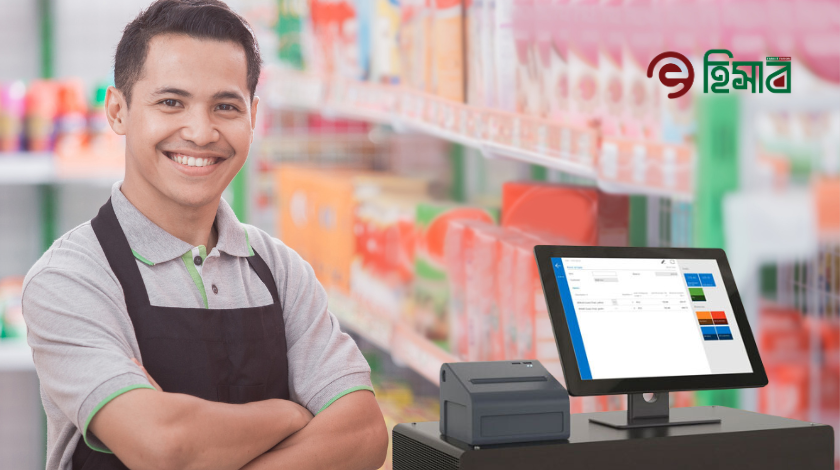In today’s fast-paced retail industry, success heavily relies on efficiency, accuracy, and customer satisfaction. One of the key tools that can significantly contribute to achieving these goals is Point of Sale (POS) software. It A reliable accounting management system streamlines various aspects of retail operations, from inventory management to sales reporting, and enhances the overall customer experience.
POS Software
POS software, which stands for Point of Sale software, is a computer-based application designed to facilitate and streamline the process of sales transactions at retail or hospitality establishments. It serves as a digital replacement for traditional cash registers, enabling businesses to manage inventory, process payments, and generate receipts efficiently. This software typically includes a user-friendly interface that allows employees to ring up sales, apply discounts, and track customer information effortlessly.
Understanding POS Software for Retailers
Before delving into the tips, let’s first understand what POS software is and how it functions. Point of Sale software is a computerized system that enables retailers to manage sales transactions, process payments, and track inventory in real-time. Modern POS solutions are designed to offer a user-friendly interface and can be tailored to meet the specific needs of different retail businesses.

Great Tips for Successful Retailer Using POS Software
In this article, we will explore 15 great tips for retailers to harness the power of POS software and drive success in their businesses.
1. Advantages of Using POS Software
- Streamlined Inventory Management: POS software allows retailers to keep a close eye on their inventory levels. With real-time tracking, businesses can easily identify popular products, track stock movements, and set reorder points to avoid stockouts.
- Enhanced Sales Reporting: Gone are the days of manually recording sales data. POS software generates comprehensive sales reports, offering valuable insights into daily, weekly, and monthly sales performance.
- Improved Customer Relationship Management: A good POS system enables retailers to gather valuable customer data, helping them create personalized shopping experiences and build long-lasting customer relationships.
- Simplified Employee Management: With POS software, managing employees becomes more efficient. Retailers can track staff performance, monitor shifts, and assign roles with ease.
- Efficient Accounting and Bookkeeping: POS software can integrate with accounting systems, simplifying bookkeeping processes and ensuring accurate financial records.
2. Selecting the Right POS Software
- Assess Your Business Needs: Before investing in POS software, retailers must assess their business requirements and choose a system that aligns with their goals and budget, the most suitable best POS software.
- Consider User-Friendly Interface: An intuitive and user-friendly interface is crucial for seamless operations. Retailers should opt for software that requires minimal training for their staff.
- Integration with Other Systems: For smoother business processes, it’s essential to select a POS system that can integrate with other software like inventory management or CRM.
- Cloud-Based vs. On-Premises POS Software: Retailers must weigh the benefits of cloud-based and on-premises POS systems to determine which one best suits their business needs.
- Pricing and Scalability: Retailers should choose a POS solution that offers transparent pricing and is scalable to accommodate future business growth.

3. Training Your Staff
- Organize Training Sessions: Properly trained staff can make the most of POS software. Retailers should arrange regular training sessions to ensure their employees are well-versed in using the system.
- Emphasize on Basic Functions: Focusing on essential functions during training can help employees feel confident and capable of handling routine transactions.
- Address Common Issues: Training sessions should cover troubleshooting techniques, empowering staff to resolve common issues promptly.
- Continuous Learning: Encouraging continuous learning ensures that employees stay up-to-date with software updates and new features.
4. Securing Your Data
- Regular Data Backups: Retailers should establish a routine for backing up their data to prevent any loss in case of system failures.
- Implementing User Permissions: Restricting access to sensitive data and functionalities with user permissions enhances data security.
- Installing Security Measures: Implementing security measures, such as encryption and password policies, can protect the system from potential cyber threats.
5. Offer Multiple Payment Options
- Credit and Debit Cards: Accepting major credit and debit cards enhances customer convenience and increases sales opportunities.
- Mobile Payments:Incorporating mobile payment options caters to the growing number of customers who prefer contactless transactions.
- Digital Wallets: Digital wallets provide a secure and convenient payment method for tech-savvy customers.
- Gift Cards and Loyalty Programs: Implementing gift card and loyalty programs can foster customer loyalty and drive repeat business.

6. Monitor and Analyze Sales Data
- Track Sales Performance: Regularly tracking sales performance helps retailers identify trends and make data-driven decisions.
- Identify Popular Products: Knowing which products sell the most allows retailers to optimize their inventory and focus on in-demand items.
- Analyze Customer Behavior ;By analyzing customer behavior, retailers can tailor their offerings and marketing strategies to suit their target audience.
7. Maintain Excellent Customer Service
- Personalized Shopping Experience: Using customer data, retailers can create personalized experiences that resonate with their customers.
- Quick and Efficient Service: A fast and efficient checkout process enhances the overall shopping experience.
- Handling Customer Complaints: Addressing customer complaints promptly and professionally helps retain customer loyalty.
- Implementing Feedback Mechanisms: Feedback mechanisms, like surveys and reviews, provide valuable insights into customer satisfaction and areas for improvement.
8. Regular Software Updates and Maintenance
- Stay Updated with Latest Features: Retailers should regularly update their POS software to access new features and improvements.
- Address Software Bugs and Issues: Promptly addressing software bugs ensures smoother operations and fewer disruptions.
- Ensure Hardware Compatibility: Checking hardware compatibility with software updates prevents potential compatibility issues.

9. Utilizing Customer Data Responsibly
- Data Privacy and Security: Retailers must prioritize data privacy and security, ensuring compliance with relevant regulations.
- Obtain Consent for Data Collection: Transparency in data collection and obtaining customer consent is essential for building trust.
- Use Data to Enhance Customer Experience: Using customer data responsibly can lead to personalized offers and improved customer satisfaction.
10. Leverage Social Media and Online Presence
- Engage with Customers Online: Social media is a powerful tool to engage with customers and build brand awareness.
- Promote Products and Offers: Retailers can use social media to showcase products and promote exclusive offers.
- Respond to Customer Queries: Promptly addressing customer inquiries on social media demonstrates excellent customer service.
11. Managing Inventory Effectively
- Real-Time Inventory Tracking: Real-time inventory tracking helps retailers maintain optimal stock levels and avoid overstocking.
- Set Reorder Points: Establishing reorder points ensures that retailers never run out of popular items.
- Implement Seasonal Inventory Management: Managing seasonal inventory effectively prepares retailers for fluctuations in demand.

12. Regularly Review and Adjust Strategies
- Analyze Sales Performance: Regularly reviewing sales performance allows retailers to identify areas for improvement and optimize their strategies.
- Monitor Competitor’s Activities: Staying informed about competitors’ actions helps retailers stay ahead of the competition.
- Stay Updated with Industry Trends: Adapting to industry trends keeps retailers relevant and attractive to customers.
Conclusion
A successful retailer utilizing POS software can significantly improve their operational efficiency and customer satisfaction. By selecting the right POS software, providing adequate training, securing data, offering multiple payment options, and continuously monitoring and adjusting strategies, retailers can elevate their businesses to new heights of success




